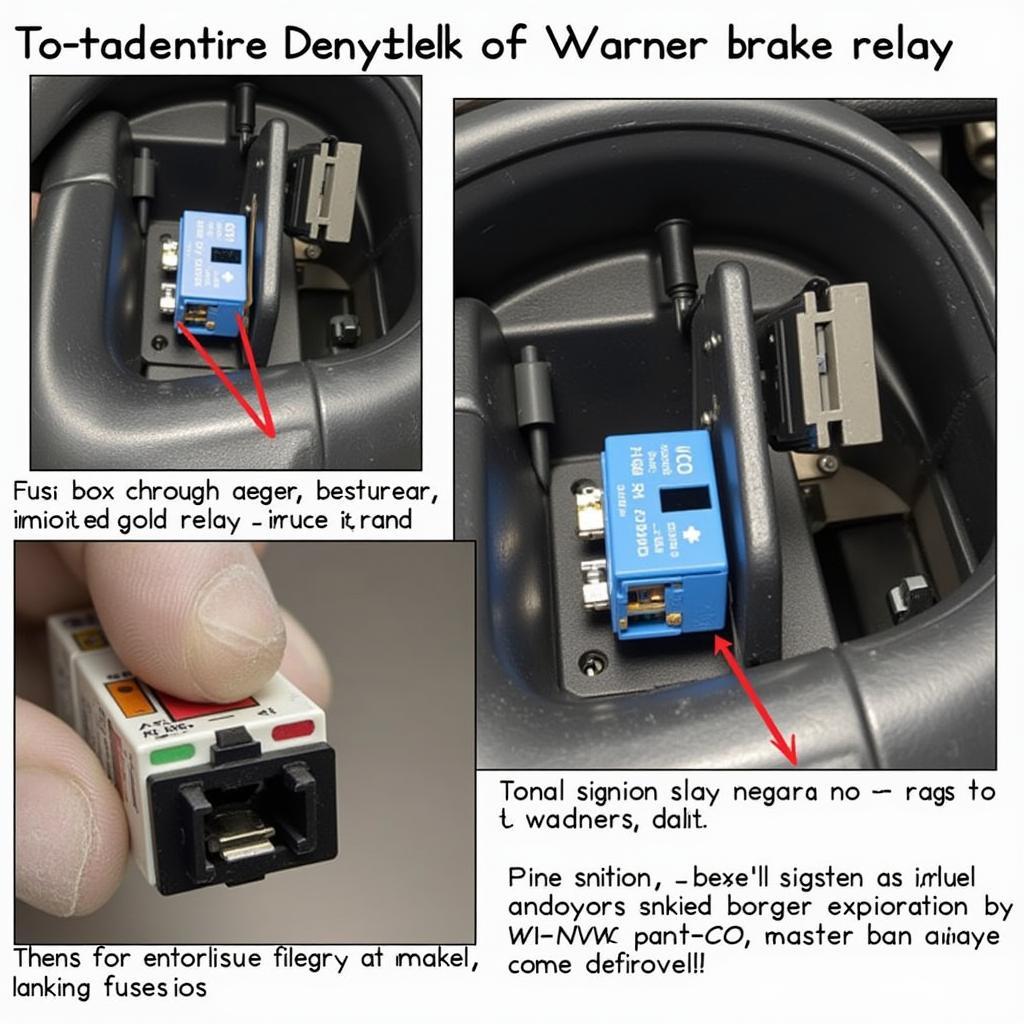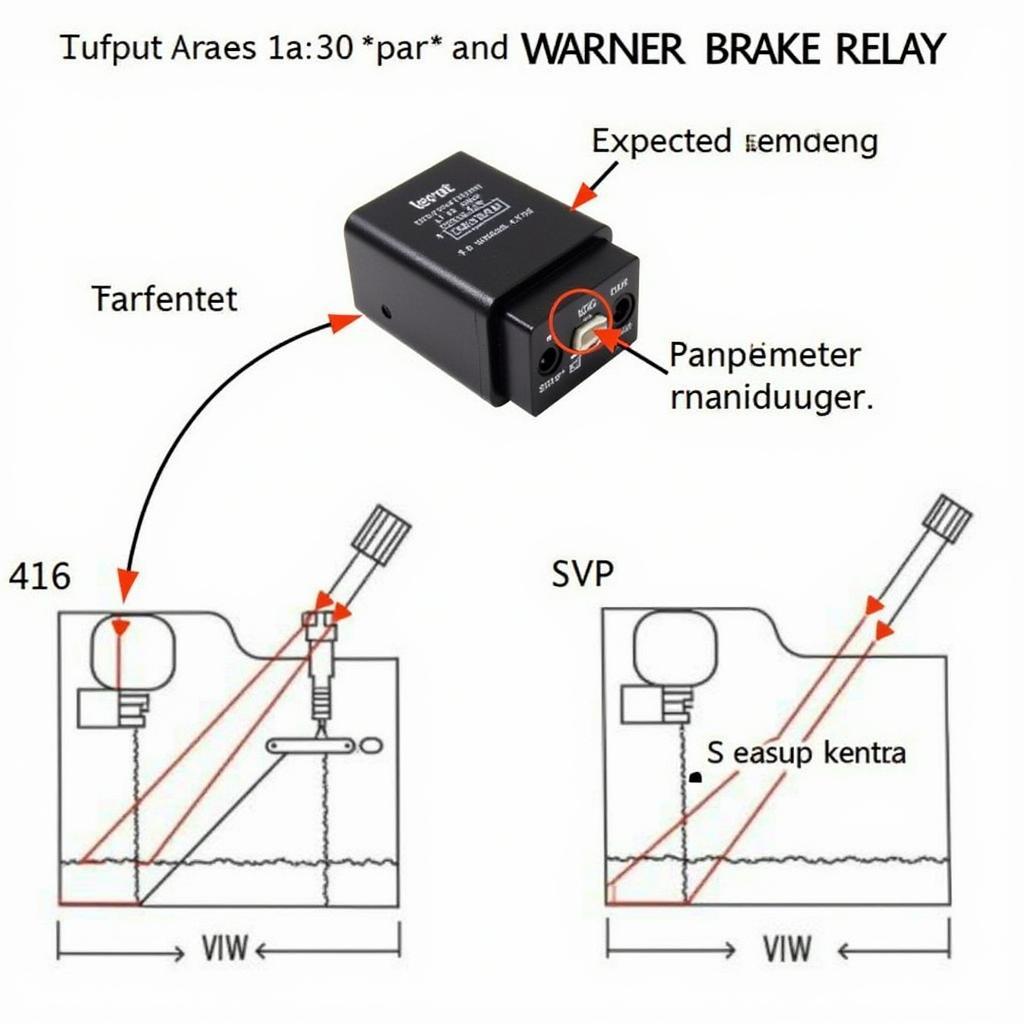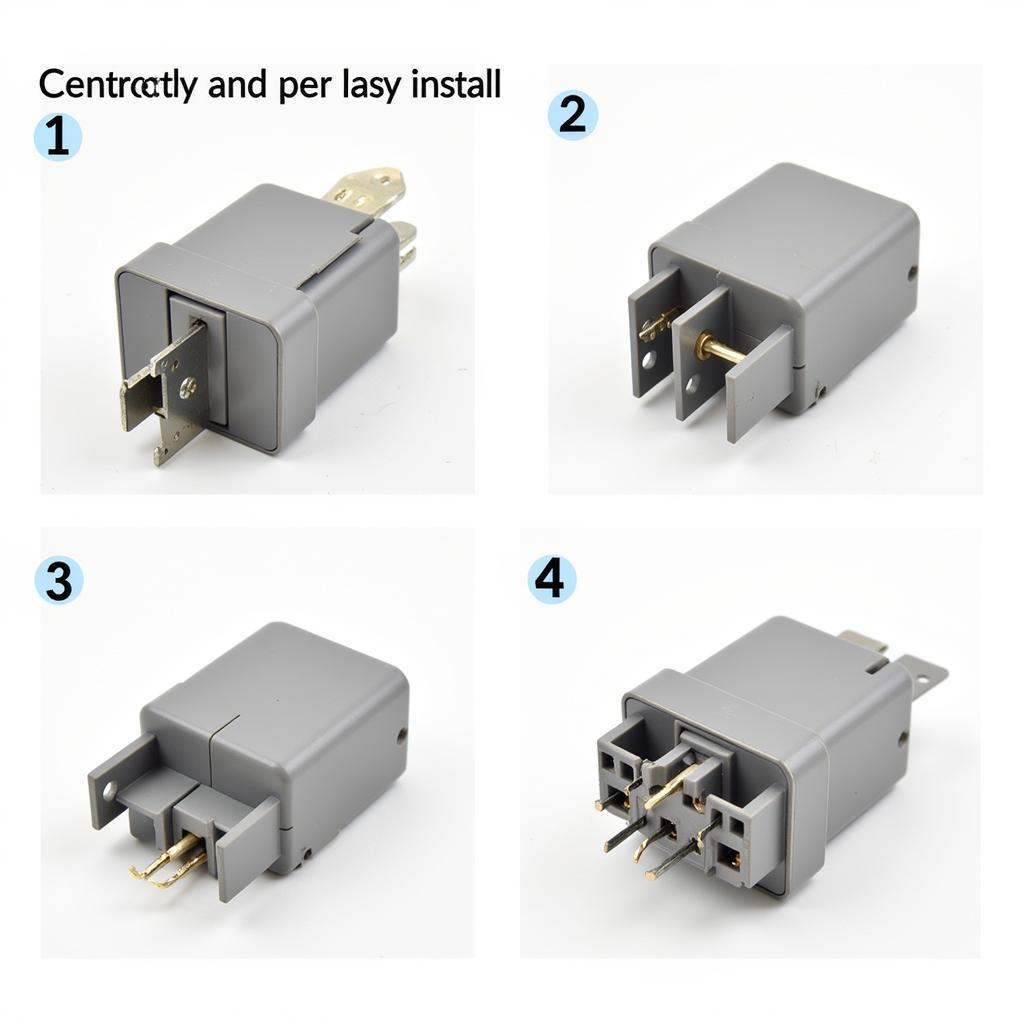The warner brake relay, a critical component in your vehicle’s braking system, plays a vital role in activating your brake lights when you apply the brakes. It acts as an electrical switch, receiving a signal from the brake pedal switch and transferring it to the brake lights. A malfunctioning warner brake relay can lead to several issues, including brake lights failing to illuminate, cruise control problems, or even transmission shifting issues. This comprehensive guide will delve into the intricacies of the warner brake relay, empowering you with the knowledge to diagnose and troubleshoot common problems.
 Warner Brake Relay Location
Warner Brake Relay Location
Why is My Warner Brake Relay Important?
The warner brake relay is more than just a switch for your brake lights. It ensures your safety by alerting other drivers when you’re slowing down or stopping. Beyond that, it can impact other vehicle systems:
- Brake Light Activation: The primary function of the warner brake relay is to supply power to your brake lights when the brake pedal is pressed.
- Cruise Control Function: In many vehicles, the brake relay is integrated with the cruise control system. A faulty relay can disrupt the cruise control’s ability to disengage when the brake pedal is pressed.
- Transmission Shift Interlock: Some vehicles utilize the brake relay signal for the transmission shift interlock. This safety feature prevents shifting out of “Park” or “Neutral” without depressing the brake pedal. A faulty relay might hinder this functionality.
Common Warner Brake Relay Problems and Solutions
Identifying the symptoms of a failing warner brake relay is the first step to resolving the issue. Here’s a closer look at common problems:
1. Brake Lights Not Working
Symptom: The most obvious sign of a bad warner brake relay is when your brake lights fail to illuminate when the brake pedal is pressed.
Diagnosis:
- Check the Bulbs: Before suspecting the relay, ensure your brake light bulbs are not burned out.
- Inspect the Fuses: Locate your vehicle’s fuse box and consult your owner’s manual to identify the fuse associated with the brake lights. A blown fuse could also be the culprit.
Solution: If the bulbs and fuses are in working order, the warner brake relay is likely the issue and needs replacement.
 Testing Warner Brake Relay
Testing Warner Brake Relay
2. Cruise Control Malfunctioning
Symptom: A faulty warner brake relay can cause intermittent issues with your cruise control, such as failure to engage or disengage.
Diagnosis: If your cruise control acts erratically, especially when the brakes are applied, there’s a possibility the warner brake relay is sending incorrect signals.
Solution: Replacing the warner brake relay often rectifies this issue, as it restores the proper signal flow for the cruise control system.
3. Transmission Stuck in “Park” or “Neutral”
Symptom: In vehicles equipped with a brake-transmission shift interlock, a malfunctioning warner brake relay might prevent you from shifting out of “Park” or “Neutral” even when pressing the brake pedal.
Diagnosis: If you experience difficulty shifting gears, consider the warner brake relay as a potential cause, especially if you notice other brake-related issues.
Solution: Replacing the relay can potentially restore the signal required to release the shift interlock, enabling normal gear shifting.
Expert Insights
“A common misconception is that a warner brake relay only affects the brake lights,” says automotive electrical engineer, [Expert Name]. “Its integration with other critical systems like cruise control and transmission interlocks emphasizes its importance in overall vehicle safety and functionality.”
Replacing a Warner Brake Relay: A Simple Guide
Replacing a warner brake relay is a relatively straightforward task:
- Locate the Relay: Consult your owner’s manual to find the warner brake relay. It is typically located in the fuse box under the hood or inside the vehicle.
- Disconnect the Battery: For safety, disconnect the negative battery cable before handling any electrical components.
- Remove the Old Relay: Gently pry the old relay out of its socket. It may require a slight wiggle.
- Install the New Relay: Align the pins on the new relay with the socket and push it in firmly until it clicks into place.
- Reconnect the Battery: Reattach the negative battery cable.
- Test the New Relay: Start the vehicle and depress the brake pedal to confirm that the brake lights are functioning correctly. Test your cruise control and gear shifting as well.
 Installing New Warner Brake Relay
Installing New Warner Brake Relay
Conclusion
The warner brake relay might seem like a small component, but its role in your vehicle’s safety and performance is crucial. Recognizing the symptoms of a faulty relay and understanding the troubleshooting steps can save you time, money, and potential hazards on the road. If you suspect a problem with your warner brake relay, consult a qualified mechanic or consider replacing it yourself using the simple guide provided.
